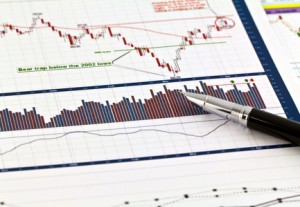De Groot, Huij, and Zhou (2012), of Robeco Quantitative Strategies and Erasmus University, Rotterdam, The Netherlands, measured the profitability of reversal (or mean reversion) strategies applied to various market cap segments of the U.S. stock market. They examined stocks from 1990 through 2009.
Their reversal portfolios were constructed by daily sorting all available stocks into five equally sized portfolios based on their past-week (i.e., five trading day) returns. They assigned equal weights to the stocks in each quintile. The reversal strategy was to buy the twenty percent of stocks with the lowest returns over the past week, and to assume a short position in the twenty percent of stocks with the highest returns. The portfolios were rebalanced every day.
They found that, when their pool of stocks included the 1,500 largest U.S. stocks, the reversal portfolio gained approximately 0.62% per week, for an annualized profit of approximately 31% a year (before accounting for transaction costs). At the same time the reversal strategy had an extremely high portfolio turnover of 677 percent per week. They found that their average period for holding a stock was less than three days. Once trading costs were taken into account the profitability of the reversal strategy greatly diminished.
They then considered the results for the 500 and 100 largest U.S. stocks. Interestingly, the reversal strategies for the largest 500 and 100 stocks earned slightly higher returns than the reversal strategy for the largest 1,500 stocks. Moreover, it appeared that the impact of trading costs on the profitability of the strategy was much lower for their samples of large cap stocks.
To further reduce transaction costs, they employed a slightly more sophisticated approach. Rather than rebalancing their portfolio each day, they waited to close their long or short positions until those stocks moved into the fifty percent of winner, or loser, stocks ranked on past return. The stocks with the lowest or highest past-week return only then replaced those stocks. This “smart” approach held the same number of stocks in the portfolio as the standard approach. The holding period with the “smart” approach was flexible for each stock. They found that the effective holding period of a stock on average was approximately six days for this strategy.
The resulting reversal profits ranged between thirty and fifty basis points per week, after transaction costs. This computed to about 15% to 25% per year and was significant from both a statistical and an economical point of view.
A further enhancement of profits was obtained when the trading rule was modified again so that long positions were not closed until those stocks had moved above the seventieth percentile of profitable stocks for the past week. Short positions were not closed until those stocks had moved below the thirtieth percentile for the previous week.
Trading strategy: Select S&P 500 stocks. Use a formation or ranking period of five trading days. Buy those stocks in the lowest return quintile. Sell those stocks in the highest return quintile. Hold long until those stocks have moved above the seventieth percentile. Hold short positions until those stocks have moved below the thirtieth percentile.

